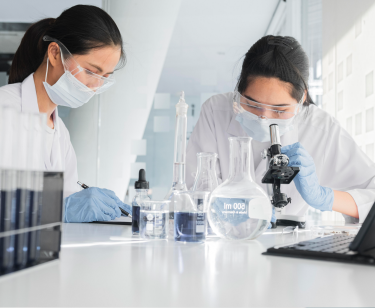ASCA has an international R&D team formed of more than a dozen application engineers and flavorists possessing rich professional experience. Equipped with advanced rotary evaporation and GC-mass technology, the high-standard laboratory masters the advanced technologies of phytoextraction, supercritical fluid extraction, and molecular distillation. The experienced R&D team, advanced R&D equipment, and comprehensive R&D technology enable ASCA to lead the industry with its technical strength.
R&D

Phytoextraction
technology
CO2 supercritical
fluid extraction (SFE)
Brown
Reaction
Molecular
distillation
Phytoextraction
technology
CO2 supercritical
fluid extraction (SFE)
Brown
Reaction
Molecular
distillation








